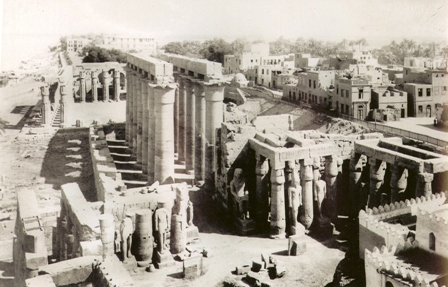'Native Son' Egyptian Photography Exhibit Comes to SU April 10-30
 SALISBURY, MD---Egyptian history and culture is on its way to Salisbury University’s Blackwell Library through the images of Attaya Gaddis, the “Native Son Photographer” April 10-30.
SALISBURY, MD---Egyptian history and culture is on its way to Salisbury University’s Blackwell Library through the images of Attaya Gaddis, the “Native Son Photographer” April 10-30.
In 1897, at age 8, Gaddis began working for the renowned photographer Antonio Beato in Luxor, Egypt. Here he was introduced to the dry gelatin-coated, glass-plate process of photography. When Beato retired in 1907 he sold his studio to Gaddis, 18, who first used photography for tourists. Later, on his own time, Gaddis photographed Egypt as a native, capturing the pyramids of Giza as well as the Nubian tribes. When King Tutankhamen’s tomb was discovered in 1922, Gaddis’ talents were demanded for use by locals and tourists alike.
Gaddis’ success led him to open two shops, one in Islamia and one in a bazaar in Luxor. Before he died in 1972 he passed his business onto his children who have kept it going since 1952. About 3,000 glass negatives remain and 2,000 are archived at The Gaddis Home, one of Luxor’s first brick buildings.
Sponsored by the Embassy of Egypt in Washington, D.C., World Artist’s Experience and the Office of Cultural Affairs, this event is free and the public is invited. Library hours are Monday-Friday 8 a.m.-10 p.m., Saturday 10 a.m.-8 p.m., and Sunday noon-midnight. For more information call 410-219-2872 or visit the SU Web site at www.salisbury.edu.
